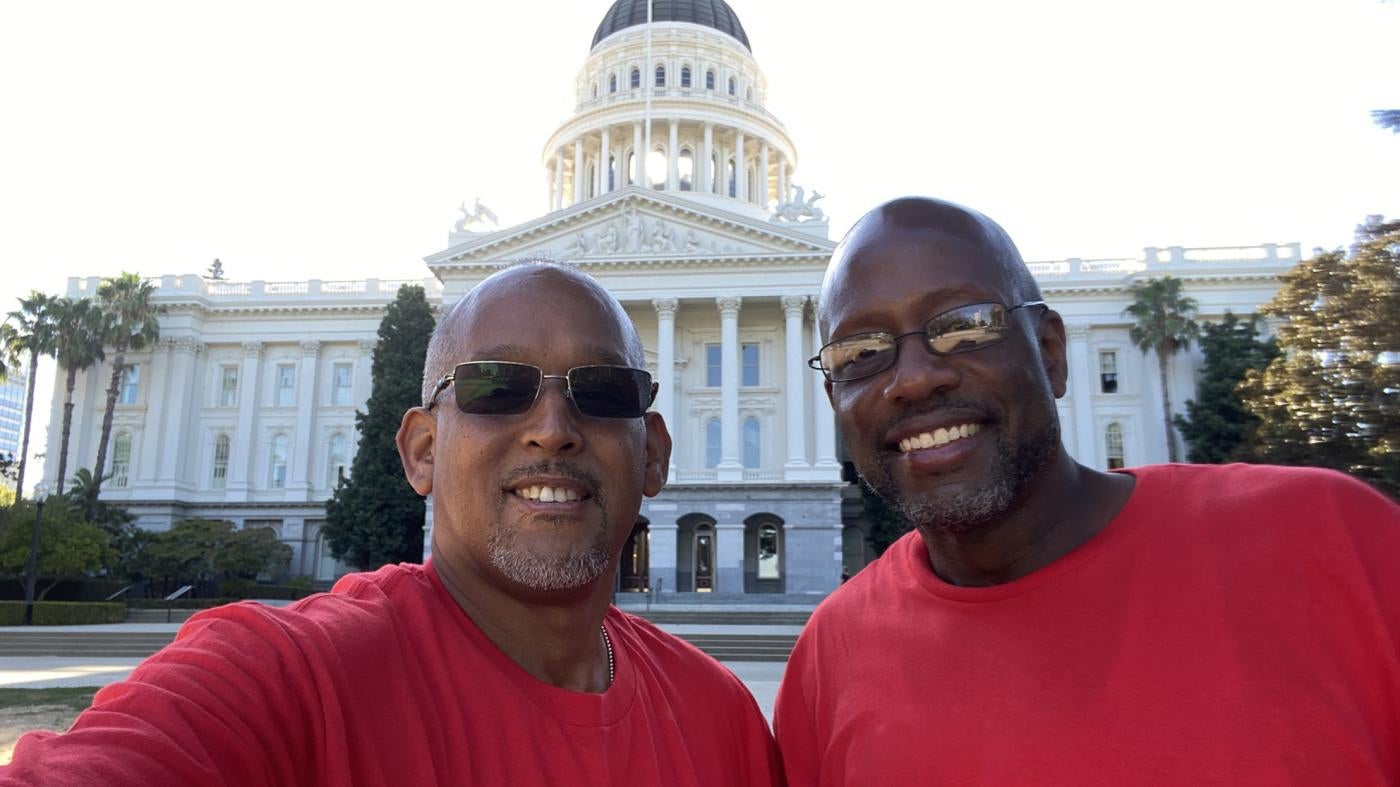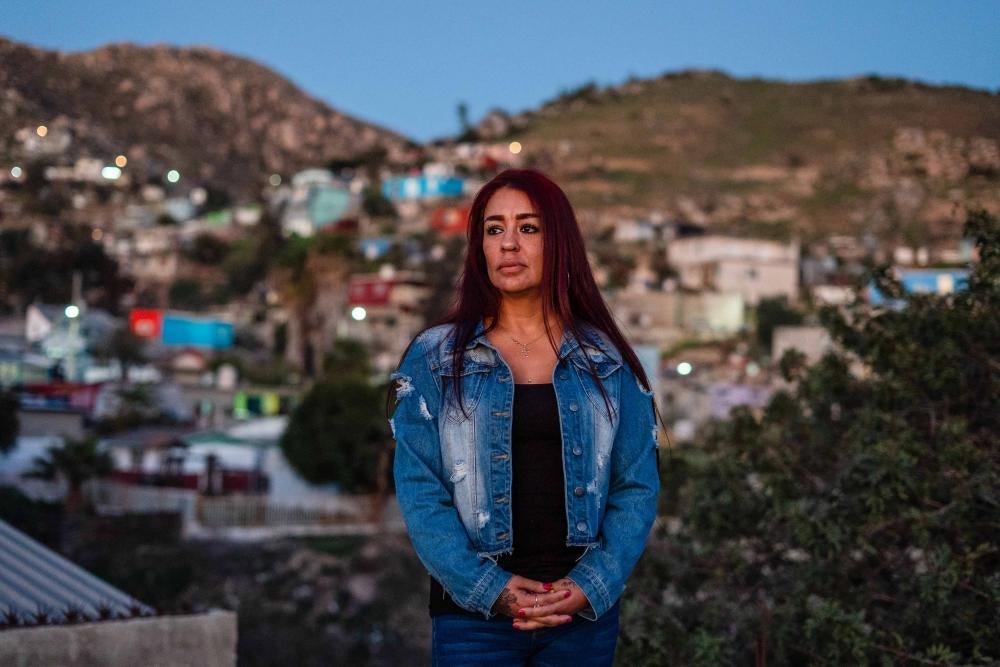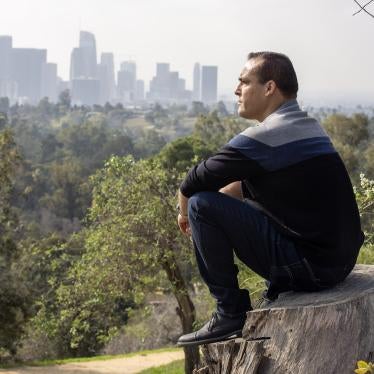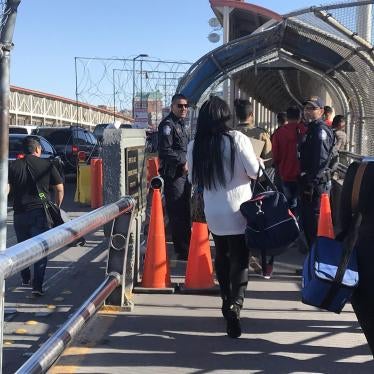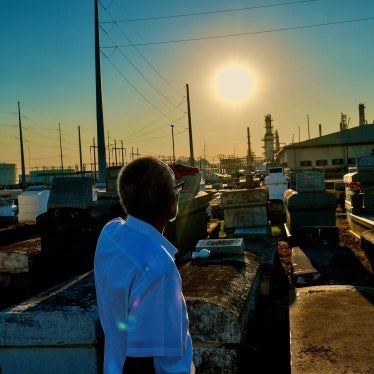Bell is not alone. Human Rights Watch surveyed more than three-quarters of the people who were released from prison after originally being sentenced to LWOP in California. We found that 94 percent of respondents reported volunteering regularly, 84 percent said they financially assisted others, and 90 percent worked full or part-time, with 43 percent working in the nonprofit sector. Kristen Sibbald speaks with Bell about his role in Human Rights Watch’s new report on LWOP, his advocacy for people who are incarcerated, and his life experiences since his release.
Tell me about LWOP laws in California, and how the report fits into this context.
It’s still a battle over the laws in California. If you’re 18 and older you can be sentenced to LWOP, although juveniles, for the most part, can’t be. The Human Rights Watch report shows that LWOPs can be productive in society. We aren’t our worst mistake.
After nearly 25 years in prison, you were given the opportunity for parole and eventually released after the California governor recognized your personal transformation and commuted your sentence. What does your life look like today?
I’m a full-time case manager and peer support specialist for a nonprofit reentry program that works with people coming out of jail. I’m also a mental health rehabilitation specialist. While I was in prison, I coordinated and facilitated programs like self-help, anger management, and relapse prevention classes. Essentially, I was doing case management inside prison and I didn’t even know it.
Personally, I just went through a divorce. I just purchased a new townhouse, so I’ve been working hard. I work for Human Rights Watch’s National LWOP Leadership Council (NLC), which is composed of former LWOP people working to eliminate life without parole. I was also part of the Legislative Outreach Committee, a NLC subcommittee focusing on legislative efforts around the country.
What was your transition like after more than 24 years in prison?
Employment was a little difficult at first. I was doing odd jobs, working on cars, doing janitorial work. Then I worked at Tesla, then UPS, and then I got the job that I have now. The biggest obstacle was the threat of losing my job. I’ve seen a lot of people lose their jobs because of a felony. I was afraid I would gain this momentum and then lose my job. And things are so much more expensive nowadays. Even a filet-o-fish sandwich at McDonald’s costs something crazy now.
I think the biggest transition has been that there are so many cars now, so many more buildings, and life just seems so crowded. And technology has been a transition for me. I had to learn how to do all the self-checkout at grocery stores. You can’t just pay. Dealing with FasTrak, the automated toll system for going across bridges and keeping up with that. Electronic toilets. A lot of little transitions.
What supports did you have, and what other obstacles did you have to overcome?
My number one support was my ex-wife. She and family and friends were very supportive. A program called Mission Possible helped me get enrolled in online college courses. They helped with resumes, work clothes, transportation, stuff like that. Human Rights Watch helped a lot with getting familiar with technology and those types of things, and with being organized and setting long-term goals, like this report ["I Just Want to Give Back": The Reintegration of People Sentenced to Life Without Parole].
Luckily, I was married, so I went under the lease for apartments and condominiums with my wife back then. But after my divorce, when it was time to apply for a home, they wanted two years’ job experience, which I didn’t have. So I had to wait it out and keep a solid job for two years, even though I had been working the whole time in prison. Over 24 years in prison and working the whole time, but they don’t count that.
A lot of individuals have to go through transitional housing before they can jump into renting a place. It’s so difficult to get on your feet out here. You have to make a lot of money just to be able to live. We come out of prison, and we don’t know anyone. After 20-30 years in prison, a lot of our friends are gone, and we just have some family.
With support like transitional housing, transportation, as well as programs in prison, we can be self-sufficient. I don’t get any assistance; I’ve been working and earning my own money. And I feel good about it.
Tell me about your work on this report.
We started working on it two years ago but we’re looking at three, four, or five years later, so I’m excited to see the outcomes in our next round of surveys.
Daniel [Jones] and I gave feedback on how the interview questions were framed so as not to trigger anybody’s prison experience, which is another form of PTSD because of the violence we’ve endured throughout our prison journey. We guided the Stanford students who conducted the interviews with former LWOPs on how to pose the questions and when not to dig too deep, as certain things may trigger bad memories.
Working with the Stanford students was enlightening because, while I was inside, I didn’t know there was so much work behind the scenes to end LWOP sentences. And I feel like maybe we also enlightened them a little bit. They were compassionate, they had empathy, and they did really well.
An important takeaway from the report was the low level of recidivism among the 143 people in California granted parole after being sentenced to LWOP. What do you think contributed to this?
Number one, I think we age out of bad behavior to some extent. Also, maturity. I was a late bloomer. Not sure how old I was, but I had an epiphany that I wanted to do better in my life. Over time you discover who you really want to be as a person, and how you want to make your claim in society or in history and so on. That’s when I began to work harder in prison and make more of an impact with at-risk and young prisoners.
Around 2004, I saw an elder doing the work. I kept seeing him go to the visiting room, meeting a bunch of kids, and I asked him what he was doing. He told me it was an at-risk youth diversion program, which redirects young offenders from the justice system into a program with social services. I told him I wanted to be a part of that, and he told me, “Well, you’re going to need to straighten up and get your shit together,” so I said I’m going to do it. I took it as a challenge.
I looked up to him. And when I started working with the kids, it made me think of my son, who was four years old when I left, and my godson. And that if I can’t reach them, at least I can reach some of these kids here.
I was learning tools on how to deal with my son, who was a teenager by then. I thought I could die in prison. I wanted my son to be able to say, “My dad died in prison, but this is what he did.”
How does the possibility of parole make a difference for people who are in prison?
I’ve seen people sentenced to life without parole get suicidal, get careless, get involved in mischief and violence. When there’s no hope, you forget about your family members, your kids, and it’s survival of the fittest. You get sucked into the negativity of the prison system. And it’s not just from prisoners, it’s from guards too.
But with hope, you look for and you create the positive things that could happen. That’s why I created a few programs [to help other prisoners] in there, because I wanted to stay busy with something positive to avoid the negative.
How has your experience working with HRW influenced your views on LWOP?
It’s definitely reinforced my belief that governments should end LWOP and prioritize rehabilitation and second chances. It gets intimidating at times, but at the same time it’s empowering because with the National LWOP Leadership Council we’re sticking together as a group. I’m hoping that we can expand to make more change. I think there’s power in numbers, and it gives me a lot of encouragement, a lot of hope.
It’s really gratifying when you can get the message across that okay, we want to give humanity a chance. There are still human beings in there, give them a chance. That’s why I do what I do.
*The interview has been edited and condensed.
